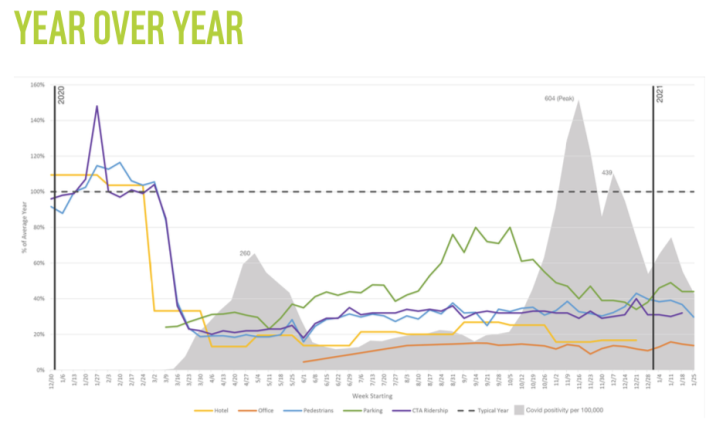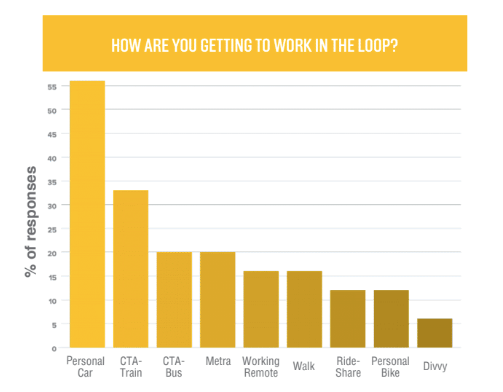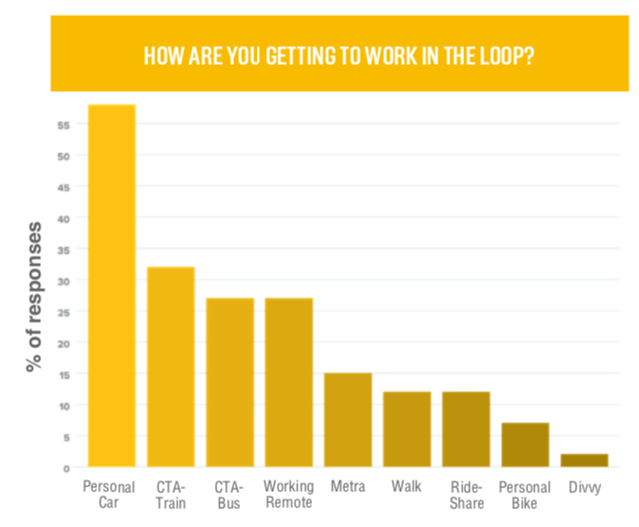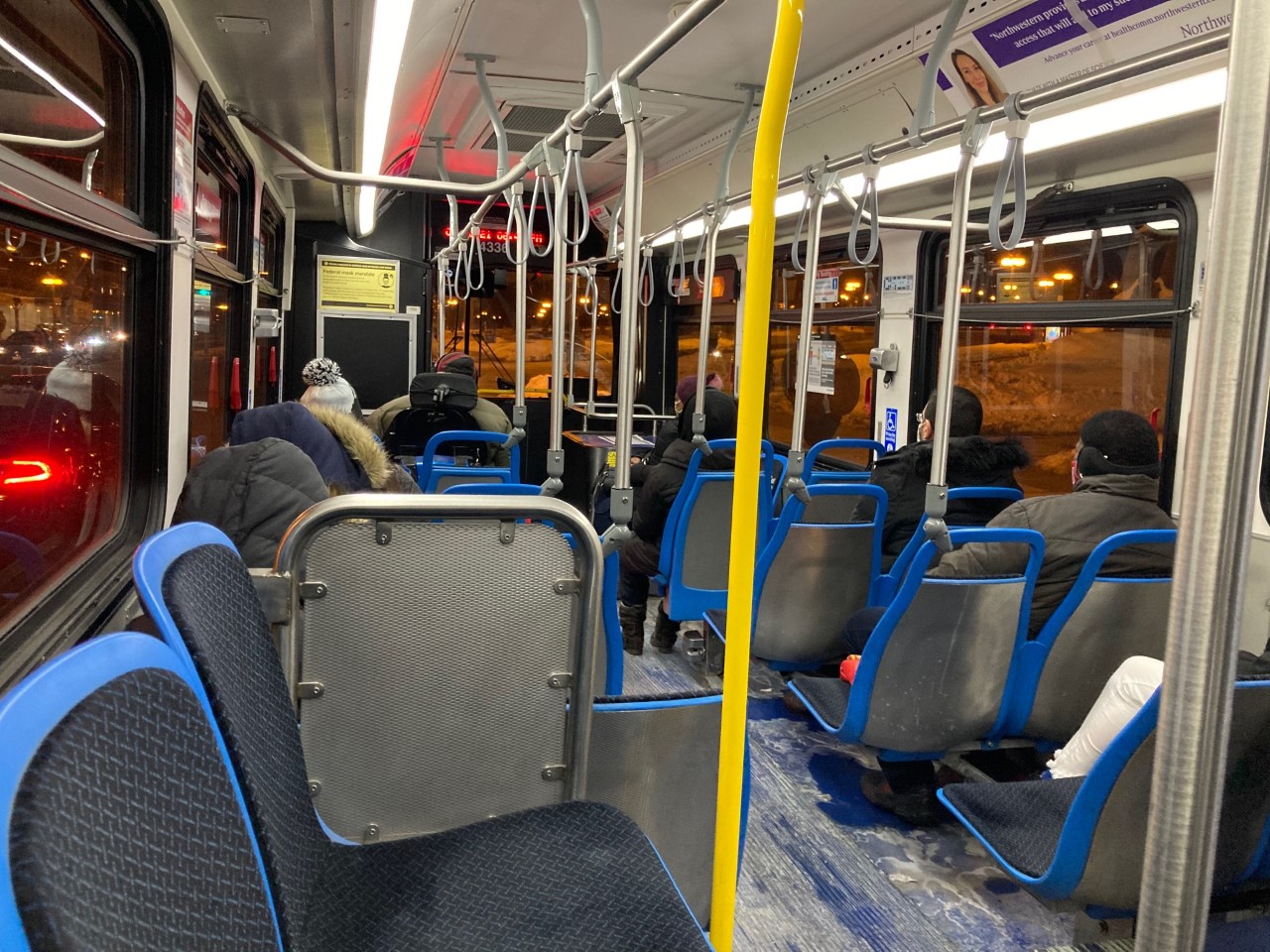Streetsblog Chicago has been following monthly pandemic recovery reports issued by the Chicago Loop Alliance, which track data from pedestrian counters, parking info, office building occupancy rates, and member surveys to measure changes in physical and economic activity downtown since the start of the pandemic. Of particular concern has been a spike in parking rates, plus survey responses in the late summer that warned of an impending “carmageddon” from commuters hesitant to return to public transportation when businesses begin to reopen. However, a drop in parking rates in the fall and winter, along with gradual increases in CTA ridership seemed to indicate things might not be as bad as they could have been.
The Loop alliance report for December showed a continued decline in parking rates and a steady increase of pedestrian traffic leading up to the winter holidays, with an increase of survey respondents saying they had come to the Loop on weekends to shop. January pedestrian and CTA ridership levels unsurprisingly dropped back down to pre-holiday levels, about 30 percent compared to the same time the previous year. More troubling was a steady upward creep of parking rates through January which, after bottoming at about 30 percent of the prior year in mid-December, climbed back up to about 45 percent of the prior year by late January 2021.

The surge of private vehicle use in the Loop likely corresponds to the gradual re-opening of businesses as COVID-19 positivity rates continue to drop and pandemic restrictions have be loosened, such as the return of indoor restaurant and bar service. There was a 12 percent decrease in survey respondents who said their businesses were temporarily closed, and a 6 percent increase in in those who had all staff working on-site. Office occupancy rates remained below 20 percent of the prior year, so the businesses bringing staff back on site were likely in the service sector.

Personal cars remained the most popular way survey respondents reported getting to work—over 55 percent of respondents have said they use a personal car to commute since Streetsblog began following the CLA recovery reports in September. Survey respondents commuting via CTA 'L' remained about the same in December and January, while those commuting via CTA bus increased slightly—no doubt a shift from walking and biking, both of which fell in January, as temperatures plummeted and several inches of snow fell. The number of respondents working remotely increased about 10 percent from December to January, which might explain the decrease in those who reported commuting via Metra, down from 20 percent in December to 15 percent in January.

The Loop Alliance added a new question to their January survey: Does the announcement of a COVID-19 vaccine impact your plans to return to the office? Responses were split in almost perfect thirds between, yes, unsure and no. And the question “Does your organization have a plan for employees to return to the Loop?” was met with over 65 percent “no, we are unsure when staff will return.” At this early, uncertain stage in pandemic recovery, maintaining health and safety on public transportation; communicating those safety measures; and incentivizing transit transit commutes will be crucial as schools and businesses reopen. Encouraging safe and convenient commutes via train, bus, walking, and biking can be a part of every organization’s reopening plan.




